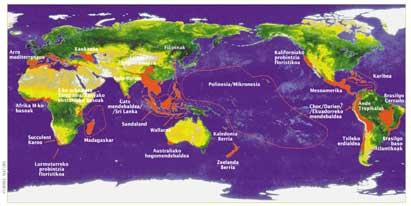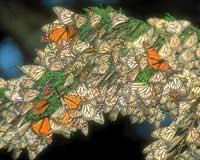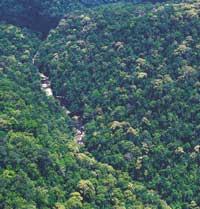Can we cope with the end of nature?

Edward O. Biologist Wilson was the director of the conference. A year ago, as a result of the conference organized by the Center for Applied Biodiversity Sciences (CAC), "Can we combat the end of nature?" Report entitled: This work will be officially presented on October 19 at the Annual Assembly of the Environmental Journalists Association of Portland, Oregon.

A total of 33 signatory scientists claim that, from a scientific and practical point of view, it is still possible to protect biological diversity and preserve Earth’s ‘health’. To do this, they insist that everyone must do what is in their hand, but not just that. Planning has also been designed to involve governments and the industrial sector. A total of 50 measures have been proposed.
To complete this collection, scientists were divided into six working groups, each of which has elaborated a part of the global environmental problem. In fact, the problem of biodiversity is not only global, but also very complex, and the most direct way to make concrete proposals was the distribution of work.
The first working group has analyzed the wild rainforests of the Amazon, Congo and Papua New Guinea, the so-called hot areas and the third and fourth freshwater problem. The fifth group has been in charge of determining the human responsible for changes affecting the environment and the last of the ‘services’ offered by ecosystems.
According to the director of the SAC, Gustavo Fonseca, "this report is the first to be made from a scientific and practical point of view to address the problem of biodiversity and there is no doubt that these suggestions are viable and make sense."
Bleeding is in the right money management

Russell A, one of the authors of the report. In Mittermeier's words, "the goals set at the conference are ambitious, but we have not questioned whether they can be achieved." In addition, he warns that if these objectives are not achieved, biodiversity losses in the ‘hot spots’ will be brutal and unrecoverable, impoverishing the quality of human life.
The ambitious claim is estimated to be $30 billion. Much, yes, but always below the 40,000 million that are returned to American families in annual taxes. Stuart L. Expert Pimm says: "The fishing industry benefits from $50 billion annually, but to maintain the fishing fleet of taxes, $100 billion is allocated." Therefore, despite the 30,000 million dollars it entails, they underline the need to take the step before it is too late.
The report notes that $25 billion should be used to protect the 25 hot areas. In these 25 areas there is a large part of the world's biodiversity and many indigenous species are not present anywhere else and/or are in danger of extinction. These 25 hot areas, regardless of the sea, only occupy 1.4% of the Earth, but they inhabit 60% of the terrestrial species. The remaining $5 billion would be spent protecting the wildest rainforests and marine reserves.
Protection measures to be taken
The aim of the report is to propose solutions of the same magnitude to deal with the world problem, and logically, the conference presented as many proposals as experts. In fact, biodiversity is attacked in every corner of the world and, therefore, there are different points of view when proposing how to protect it.

However, six working groups have contrasted their views and managed to draft a report of 50 proposals. The new main idea has been the creation of a Biodiversity Conservation Center in each hot area. The mission of the center would be to investigate the ecosystem of the region and train researchers of the new generations. Each center would have an annual cost of one million dollars. That is, to achieve this first goal would be spent 25 million dollars a year.
For Mittermeie "the idea is not surreal if we manage to involve the industrial sector. If we do not invest more than we have invested so far in biodiversity, we will never succeed. That is why we want to bet on working with the private sector and we have many expectations. In fact, the work done so far at this level has also been wider than ever and some companies have already contributed a lot of money."
However, the responsibility of governments has not been overlooked at the conference, and for them to make decisions in favor of biodiversity, they have considered it necessary, first of all, to demonstrate and make known that environmental protection is winning. This requires defining and evaluating the services offered by ecosystems. For example, water filtration, the capacity to absorb gases in forests, and the economic and beneficial convenience of disease prevention campaigns are critical.

Experts attending the conference propose to adjust a price to these services. For example, rainforests absorb carbon dioxide, so this service must determine an economic value. As carbon dioxide emission quotas are marketed, the economic value of these forests would have to add the capacity to absorb gases. Thus, the value of forests would not be set by the timber industry.
But time passes and these plans must be put in place as soon as they are designed, because if you spend too much study time, it could be too late. According to Mittermeie, "if we don't do all this now... before the next decade we will lose much of the world's wealth before the middle of the century."
Forest loss remains important
According to the latest data, in the 1990s the forest masses have suffered less damage than the previous one. In the last ten years, 94 million hectares of forests have been destroyed. That is, 16 million hectares less than in the 1980s, but 4 million hectares more than calculated by the FAO (Food and Agriculture Organization). Therefore, this fact has given much to say to the most optimistic and pessimistic, both. The former state that this data is hopeful, while the latter consider that too much damage is still done.

However, when interpreting this data, we must be very careful. In fact, in the 1990s it is estimated that the average annual loss has been 9.4 million hectares, but this figure is the difference between the 14.6 million hectares that are undone each year and the 5.2 hectares that are planted. Knowing that 95% of forests are natural forests, the loss of natural forests is 14.6 hectares above 9.4 million hectares.
The global forest area is 3,870 million hectares. FAO has announced that in the richest countries the situation of forests has stabilized, but in developing countries it is deteriorating. The situation is very serious in countries such as Brazil, Argentina, Indonesia, Burma, Mexico and Africa such as Congo, Nigeria, Sudan, Zambia and Zimbabwe.
In addition, in many countries the situation improves to the detriment of the neighbor. FAO directly denounces China's behavior, although it promotes the reforestation of its territory, since it exploits reserves from Vietnam, Laos or Burma to meet its needs.
Published in the supplement Natura de Gara.
Buletina
Bidali zure helbide elektronikoa eta jaso asteroko buletina zure sarrera-ontzian











